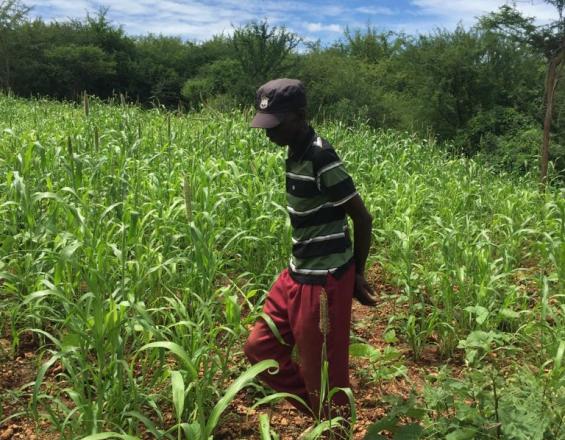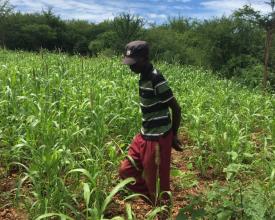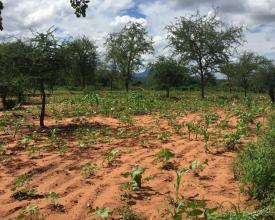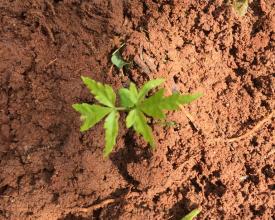
Promoting Principles of Ecosystem-based Adaptation in Conservation Agriculture

Trocaire works with local organizations to promote food and resource rights across Africa. In Kenya, the organization works with Pan African Climate Justice Alliance in a project aimed at building community resilience and climate change adaptation in semi-arid lands. Ecosystem-based adaptation (EBA) is the central approach applied in three counties where land and ecosystem management techniques are integrated with conservation agriculture. At the same time the principles of EBA are promoted to achieve food and income security for small holder farmers vulnerable to climate risks.
In Embu County, farmers have been trained on the principles and practices of ecosystem-based adaptation and how to integrate conservation agriculture in their farming techniques, alongside soil water and moisture conservation and agro-forestry. Target farmers are now minimizing tillage, using more manure, mulching, planting of soil cover crops as part of an inter-cropping strategy, and diversifying their crops.
Impacts
Environmental Impacts
- Increased fruit and fodder tree cover in farmland helps in shade provision, which conserves soil moisture while shedding foliage that serves as mulch and manure. Some trees species, like gravellier, are good for fuelwood and timber.
- Conservation agriculture techniques like minimal tillage, soil cover and soil moisture conservation are great for soil management and enhance biodiversity while maintaining productivity. This also reduces the risk of top soil loss to flash floods and minimizes desertification by reducing exposure to direct sunshine and heat.
Socio-economic Impacts
- Fodder and fruit trees within farms are an important source of food for families and livestock. Fruits will eventually provide a cheap source of vitamin for households while fodder from the trees serves to improve livestock nutrition and production. Some of the trees integrated in farms include mangoes and pawpaw; some households have potential to produce enough fruit to sell in the market and boost their income.
- Multiple cropping and intercropping will eventually build the resilience of agricultural farms through genetic diversity and ability to withstand climate-related risks. Similarly nutritional value for the family and children will be diversified. This approach has potential to increase yields and enable families to sell surplus harvest and meet other household needs.






